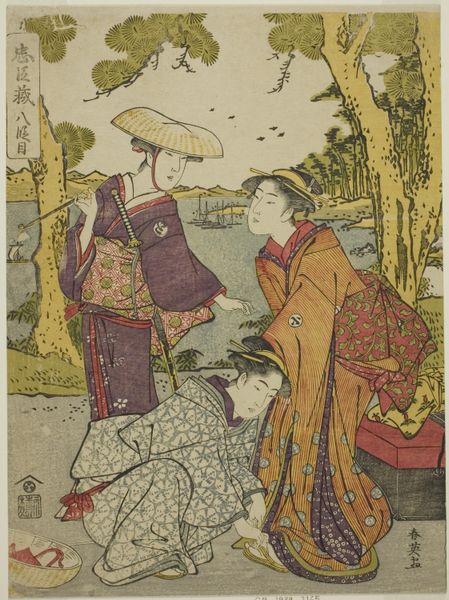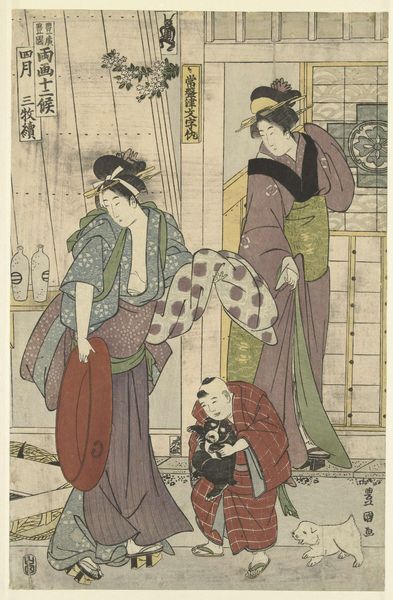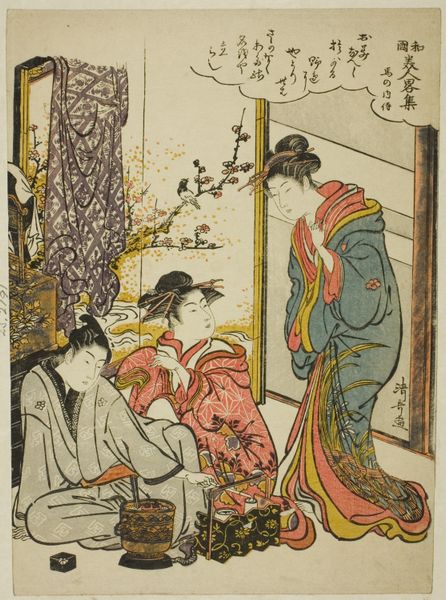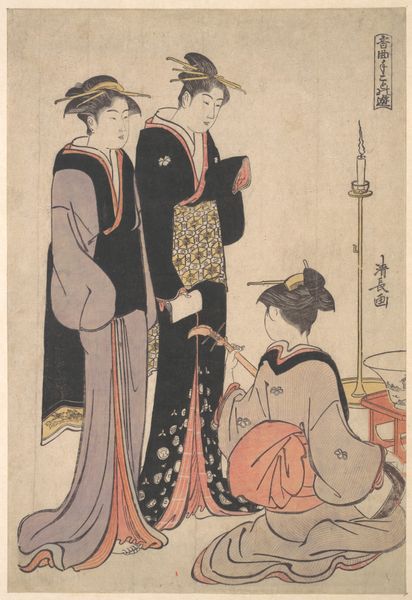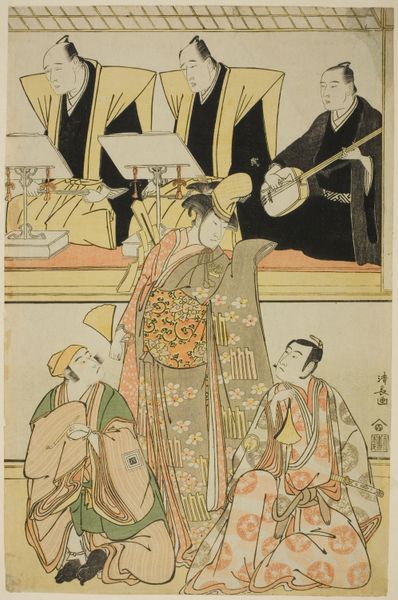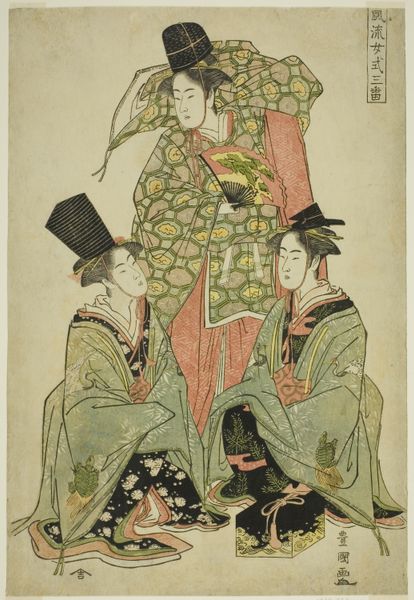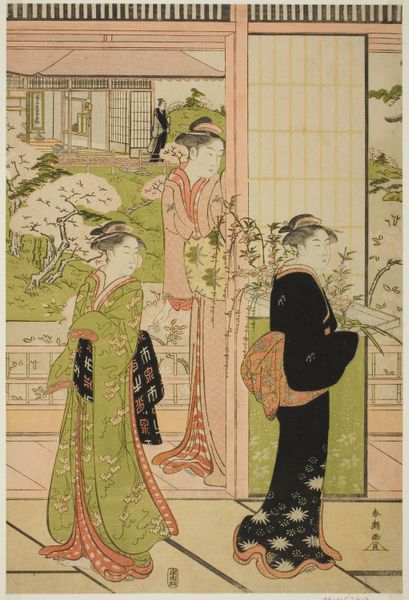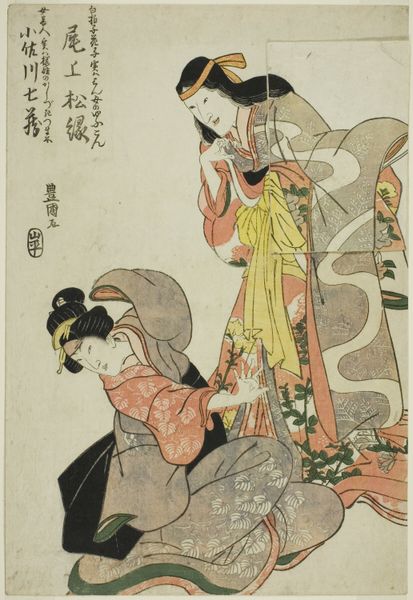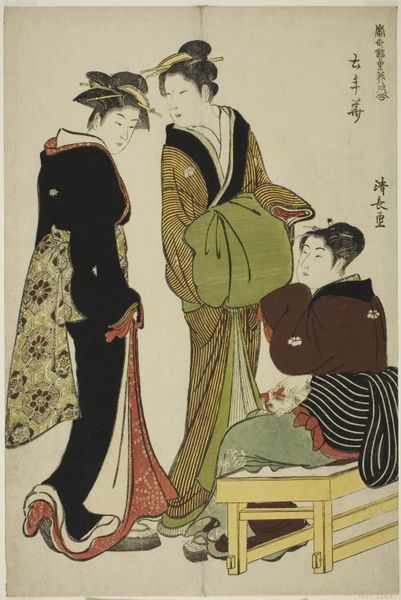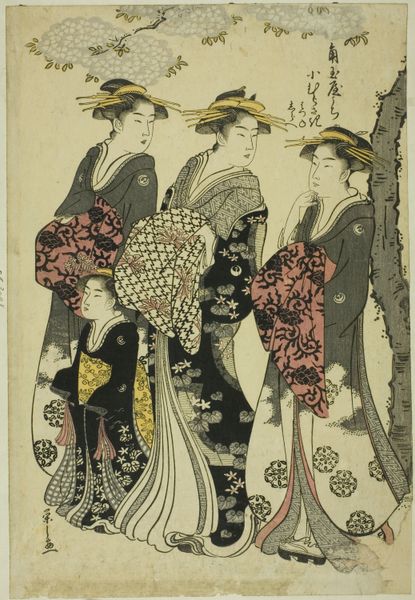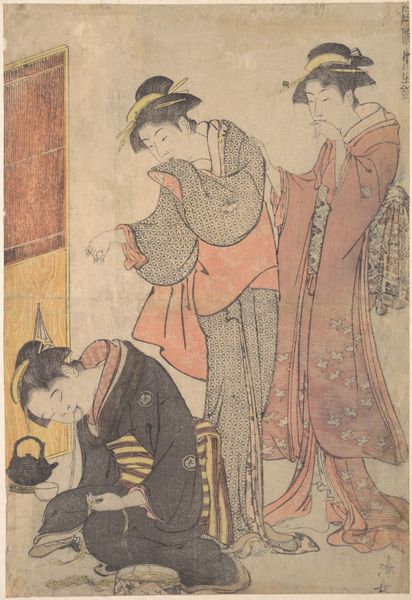
Kiyomizu, from the series "Seven Komachi (Nana Komachi)" c. 1791 - 1792
0:00
0:00
print, woodblock-print
# print
#
asian-art
#
ukiyo-e
#
figuration
#
woodblock-print
#
genre-painting
Dimensions: 26.2 × 19.5 cm (10 5/16 × 7 11/16 in.)
Copyright: Public Domain
Curator: Today we're looking at a woodblock print titled "Kiyomizu, from the series 'Seven Komachi (Nana Komachi)'" by Chōbunsai Eishi, created around 1791 or 1792. Editor: My initial impression is one of serene beauty. The muted colors and delicate lines evoke a sense of tranquility. It’s remarkable how the artist captured light. Curator: The composition is quite interesting; Eishi masterfully employs perspective, drawing the eye toward the background. The artist is celebrated for idealizing female beauty through the subtle elegance of line. Observe the arrangement of these three figures and the wall behind them; note their geometry. Editor: I'm drawn to the textiles depicted. The layering of kimono fabrics, their varied patterns... they must have been time-consuming and meticulous to produce in both real life and on the woodblock. These garments hint at a sophisticated understanding of fashion and material production in this period. Curator: Absolutely. Ukiyo-e prints such as this often captured the contemporary life of Edo period Japan. Consider the cultural significance here—"Seven Komachi" refers to the legendary poet Komachi, depicted in seven different guises. Here, we observe these women associated with the Kiyomizu Temple. Editor: It's tempting to consider the labour involved. Who were the artisans carving these blocks, layering colors, and transferring the images? They are crucial figures in the production and circulation of images that so elegantly convey high culture. Curator: Indeed, though unsigned, such woodcuts called for highly trained artisans at different steps in the printing process, each contributing uniquely. If you note, Eishi focused less on actors or courtesans and more on educated women from the upper classes and elevated the category of bijinga, or images of beautiful women. Editor: Seeing those water currents juxtaposed against the patterned stonework underscores that tension between nature and culture central to Japanese art. It encourages me to see those two aspects not as conflicting, but integrated, even interwoven, as demonstrated in textile patterns that reflect similar organic forms. Curator: A very astute observation. This piece represents the quintessential elegance Eishi brought to Ukiyo-e prints—balancing refined composition, subdued yet evocative palette and graceful human form. Editor: Examining this piece makes one ponder the fusion of design, production, and representation; the delicate dance between artistic intention, the artisans’ hands, and social context. It underscores how art manifests from material and its social web.
Comments
No comments
Be the first to comment and join the conversation on the ultimate creative platform.
